Green Acre #384: Dumbarton Oaks Unflowered
By Stephanie Cavanaugh
THE OTHER DAY Baby took me on a belated Mother’s Day trip to Dumbarton Oaks, the fabulous Georgetown garden. Few places in Washington DC are as delightful on a weekday afternoon, when the visitors are few and it feels like your own private estate.
Spread over 40-some acres are terraces and pools, arches and outbuildings, formal borders and areas of wilderness. Yet even such grand gardens as these have between times, and this is one of them.
Perhaps this is most apparent in one of my favorite spots, two parallel hundred-foot-long herbaceous borders. Few sights are as splendid as these are in spring, when blooming masses of pink, and red, pale blue, and lavender tulips and pansies, spiked with giant fuzzy purple balls of allium, are set against a backdrop of yews. Butterflies flit about and children roll down the grassy slope. It is wonderland. Make note for next Eastertime.
Right now, all that danced is nearly spent, but glorious still in its raggle-taggle disarray. There’s an expectation, an inhalation, before the summer borders burst with lilies and brilliantly blooming annuals. In fall, chrysanthemums and asters will hold court, gliding the garden into winter.
Wander on. Most of the roses are over, there’s nothing to see of the lilac grove. The wisteria—do I recall a fabulous white one along a wall?—has flowered its last. The cherries have turned green, as has the lilac grove.
Does this sound sad? It’s not. The eye is taken with the landscape, the hardscape, the ornaments: pots and urns and sculptures designed for the space; a fabulous swimming pool; a mosaic pebble garden. Most particularly enjoyable, the absolute peace and quiet.
The ellipse was empty but for us. The grass circle is surrounded by a double row of American hornbeams, 16 feet high and about as wide. In the center is a Provençal fountain. Between the trees and gentle splash of water, there’s near total quiet.
Tiny-flowered blue star creeper carpets the ground beneath the trees, and it was in one small patch that I notice the fence. It’s not a fancy thing and does not appear intimidating to grow—nor does it appear to require a lifetime to train. It’s just a simple series of low half hoops, sprouting some leaves, that promises a green border to surround a patch of garden. Maybe it will flower. I could do this. Could I do this?
My handy flower app, Picture This, says it’s an osage orange, but I think the app is lying. Maclura pomifera is a small tree that bears unpleasant tasting fruits that look like large rough-textured citrus, though it’s not a citrus at all.
For actual citrus, there’s the glorious orangerie. Built around 1810, with fanlight-topped French doors and glassed ceiling, this is the oldest structure on the property. Within, the stone walls are smothered in a creeping fig vine, and placed around the room in huge pots are decadently sweet-smelling citrus trees.
Could it be creeping fig vine that was repurposed for the fencing? Maybe wisteria—no, that would be madness if it took root. Unfortunately, there’s no staff to ask. The phone system kept dropping me out, and the website— while appearing to be comprehensive—left me with more questions. A message left was never answered.
Closed to the public during the plague years, the gardens of Dumbarton Oaks at 1703 32nd Street NW are again open from 2 to 6pm, Tuesday through Sunday, except for federal holidays. But you must reserve online in advance (admission is $7). They no longer have a ticket window: Guards have clipboards with guest names. Internet service is terrible, as we found out, so attempting to reserve on the spot is tortuous. Be warned! But do go.
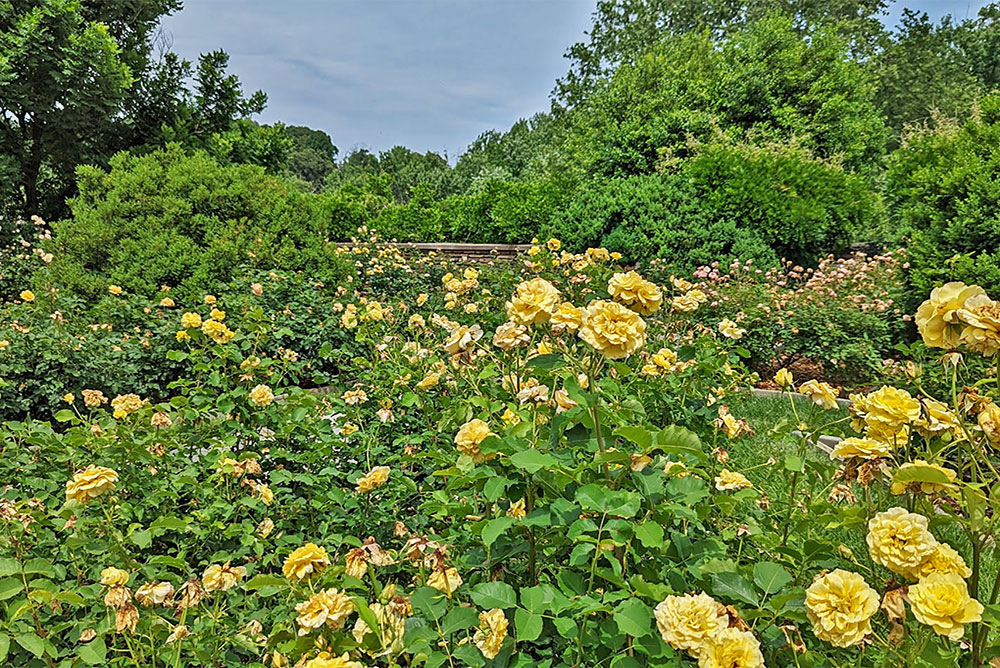
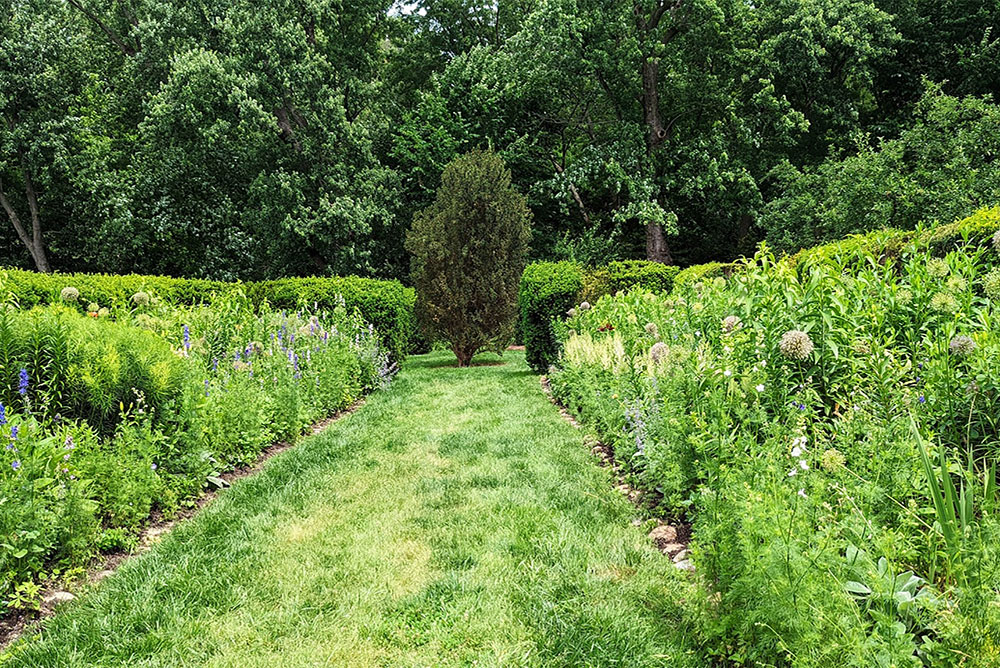
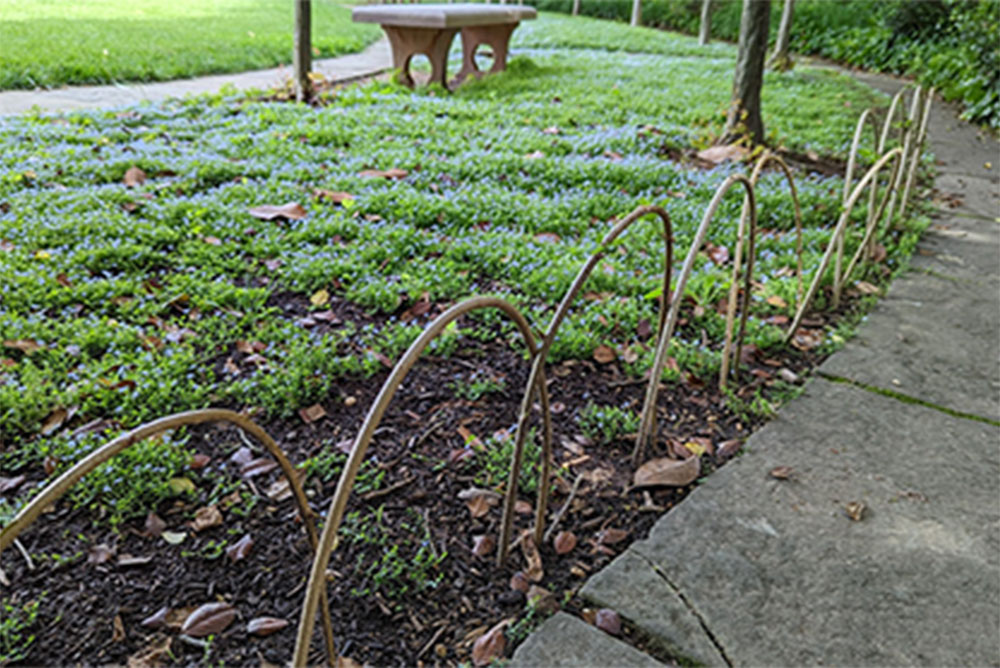
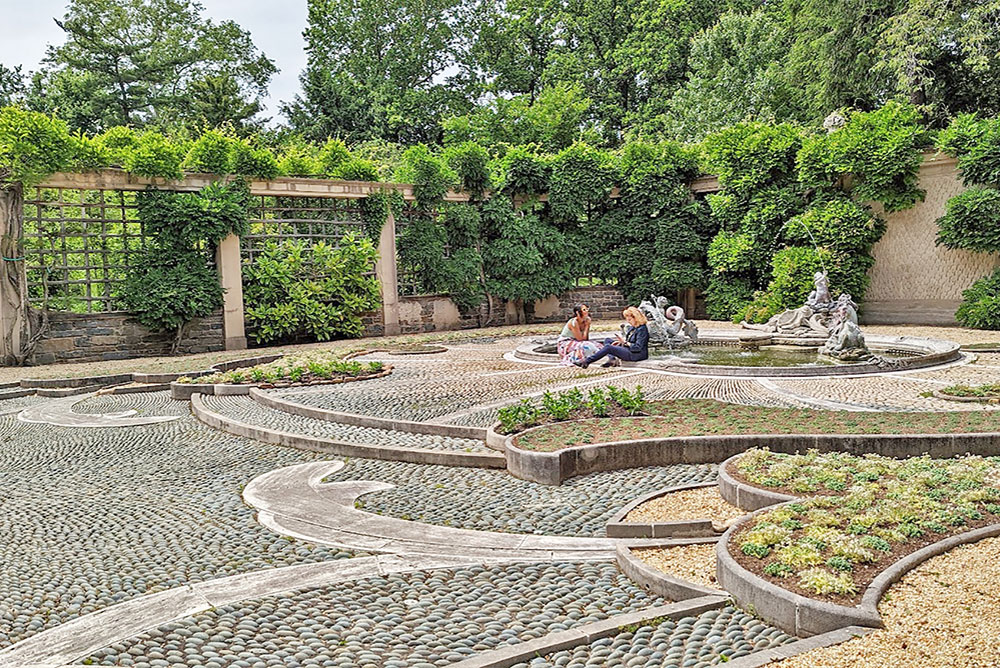

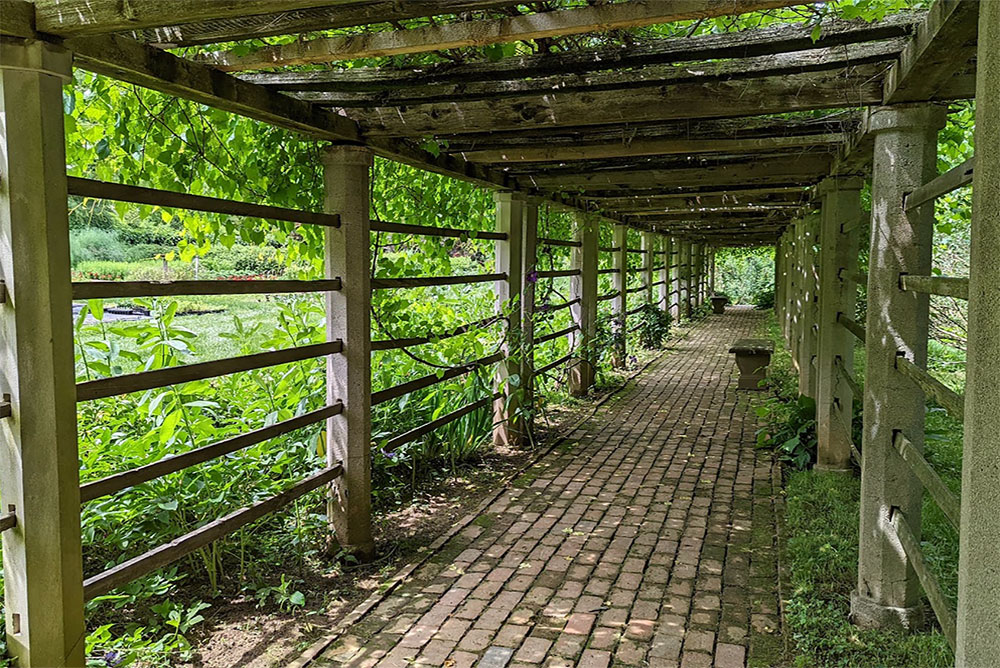

Thanks for the reminder of one of Washington’s finest traditions. Dumbarton Oaks is a treat, and you captured it so well!
Thank you for reminding me what a wonderful place Dumbarton Oaks – with its garden and history – is. Your piece has been filed away in a folder I keep for visitors. Will be the perfect place for the Brits, due in the Fall, to spend time before hitting Georgetown to shop!